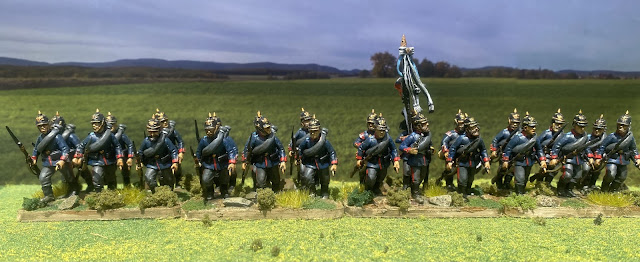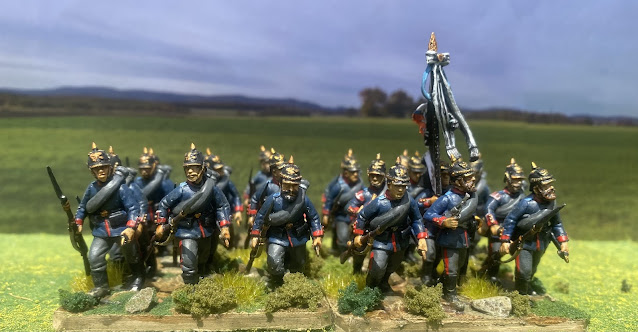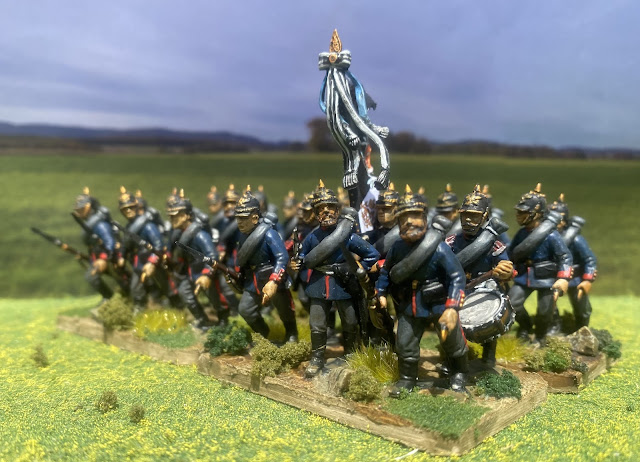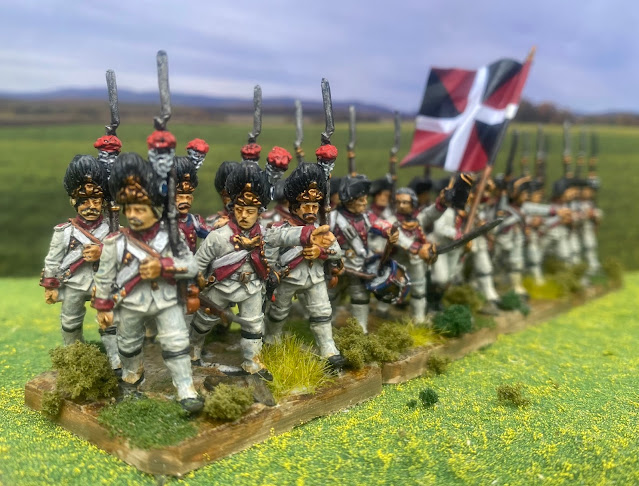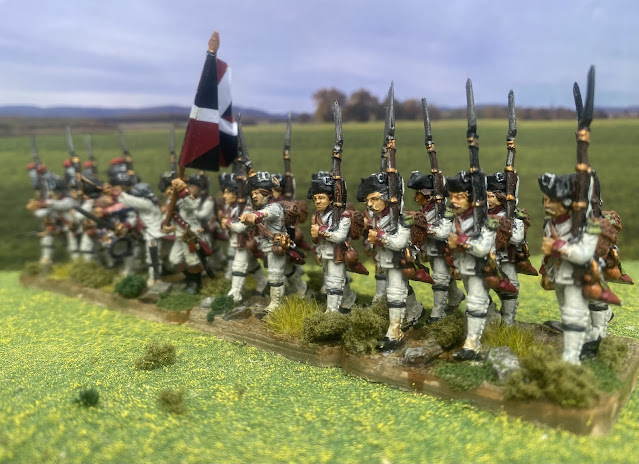This week sees the addition of Régiment de Saintonge to the French AWI army.
It was formed on 4 September 1684 from the ancient regiment of Navarre, its recruitment was from the province of Saintonge, north of Bordeaux. In 1775 the regiment was expanded from one to two battalions by incorporating the Régiment de Cambrésis.
Between 1763 and 1768 the regiment served in the West Indies and French Guiana. Two years later Rochambeau selected it to participate in the French expeditionary force to America. Under the command of Col. Adam-Philippe, Count de Custine de Sarreck, Saintonge regiment distinguished itself at the siege of Yorktown, where it was brigaded with the Régiment Soissonaise (featured in my last AWI French post).
The regiment’s major, the Marquis de Fleury, had earlier taken a leave of absence to join the American forces as a volunteer, fighting at Brandywine and Germantown, further distinguishing himself at Stony Point when he was first into the British fort and secured the colours, for which he was given a medal by the U.S. Congress.
After Yorktown command of the regiment fell to Rochambeau’s son. Departing the United States from Boston in December 1782 for service in the French Antilles. It returned to France the following year. After the Revolution the regiment was redesignated the 82e Régiment de Ligne.
The regimental colours were spectacularly colourful.













